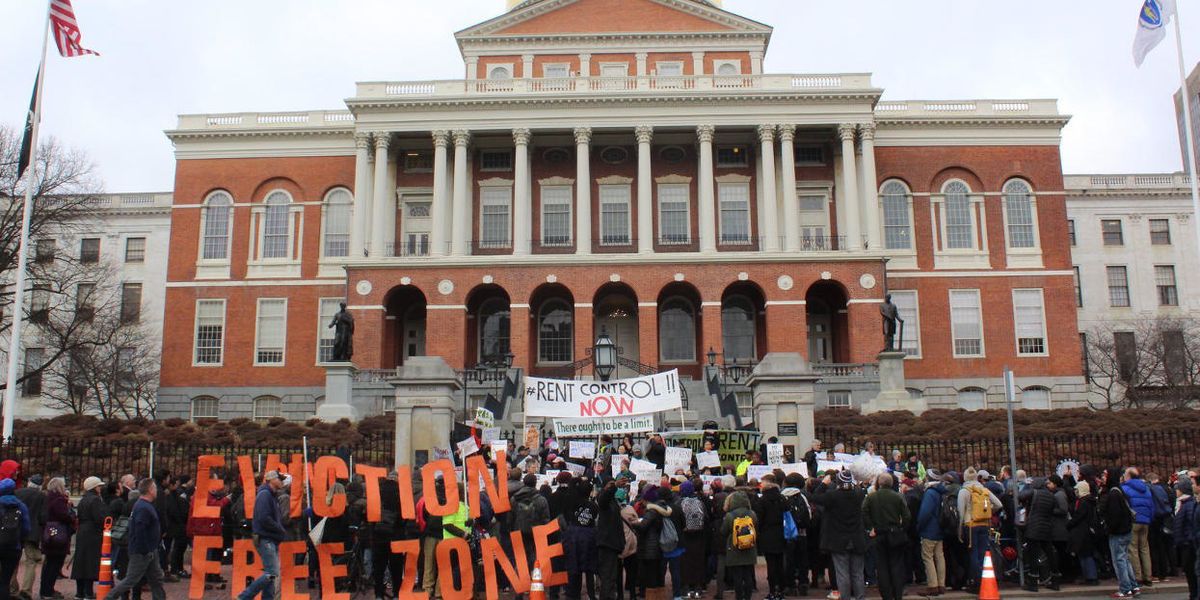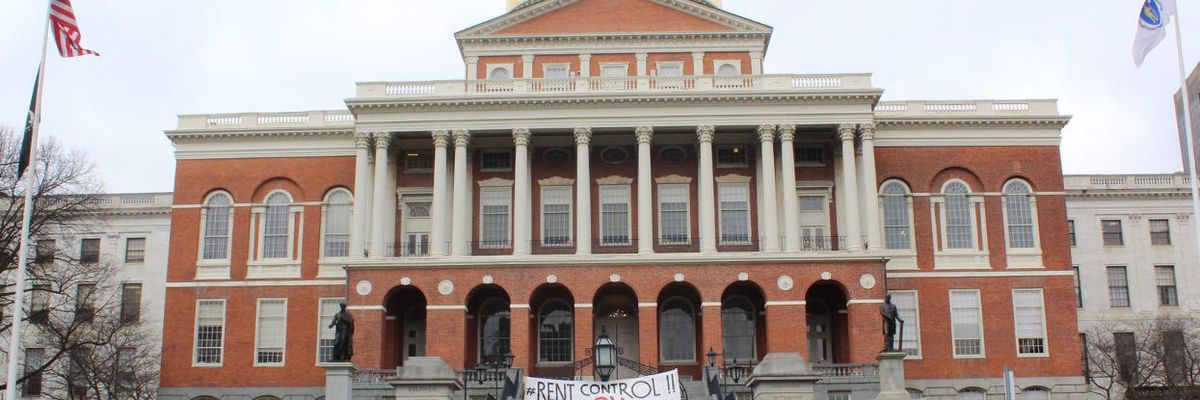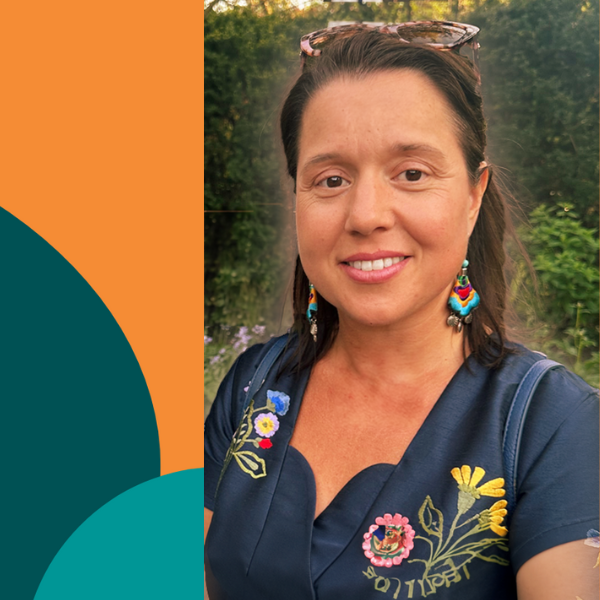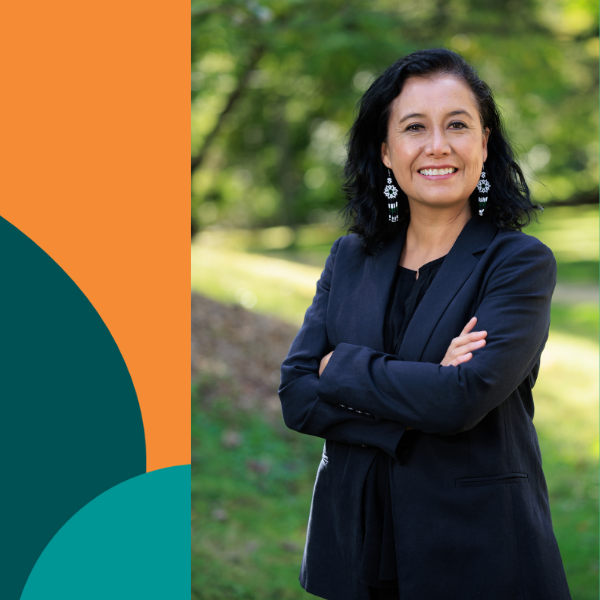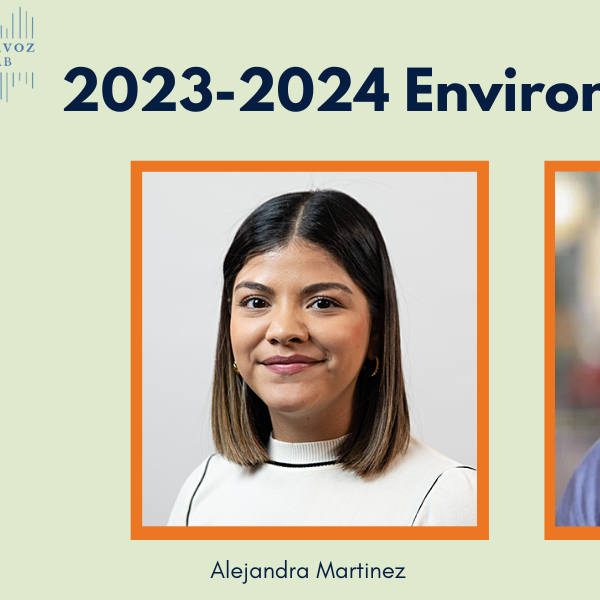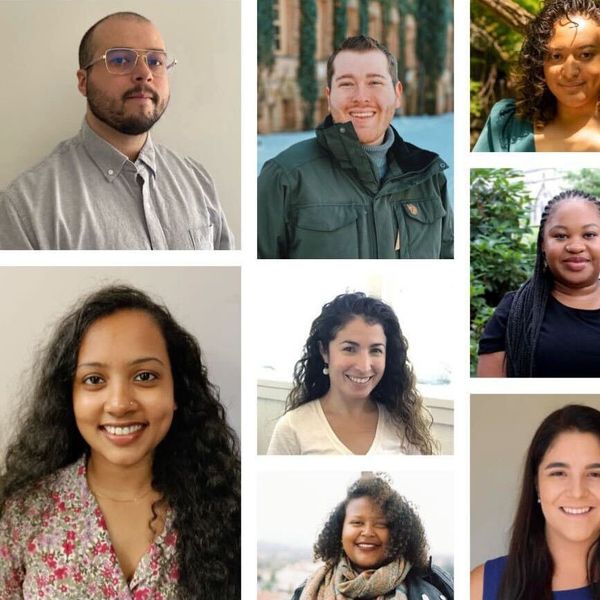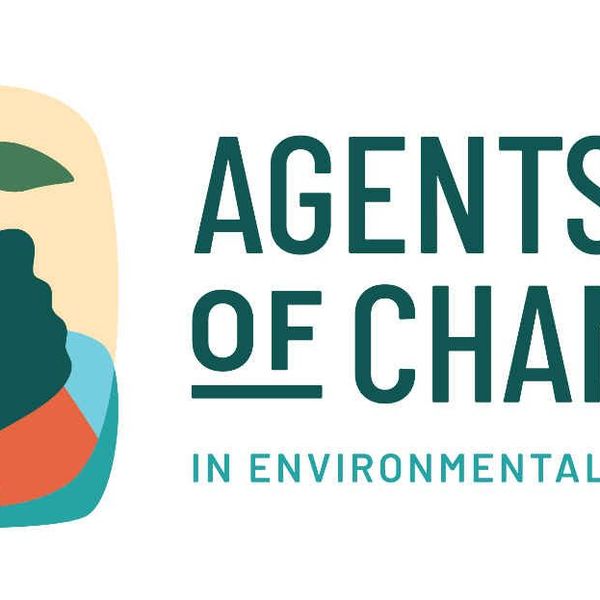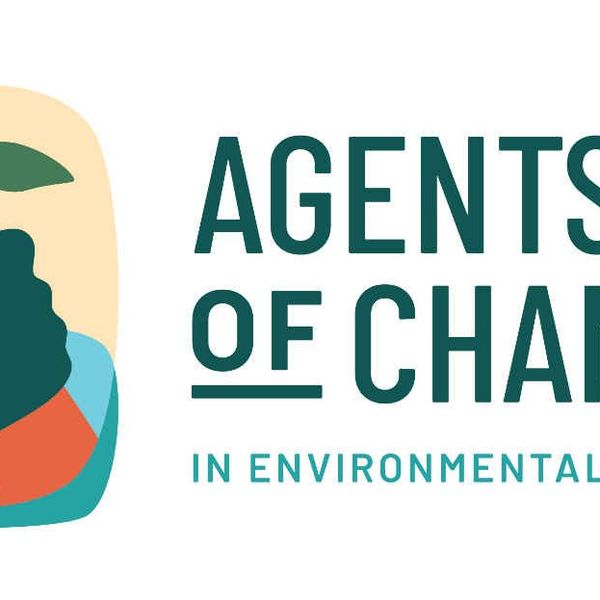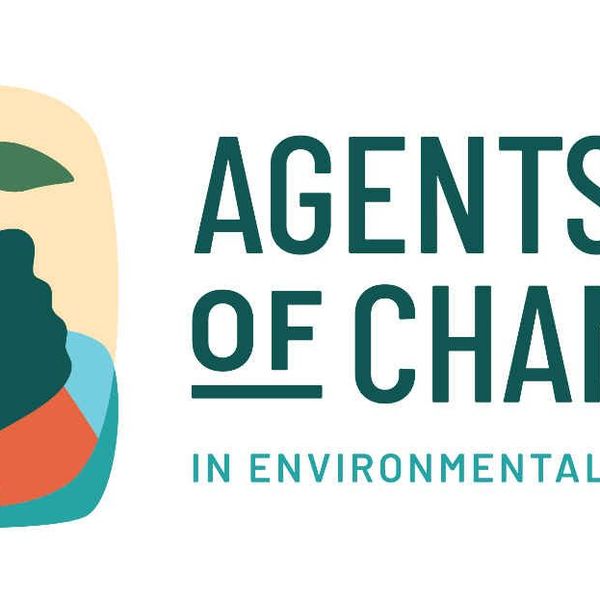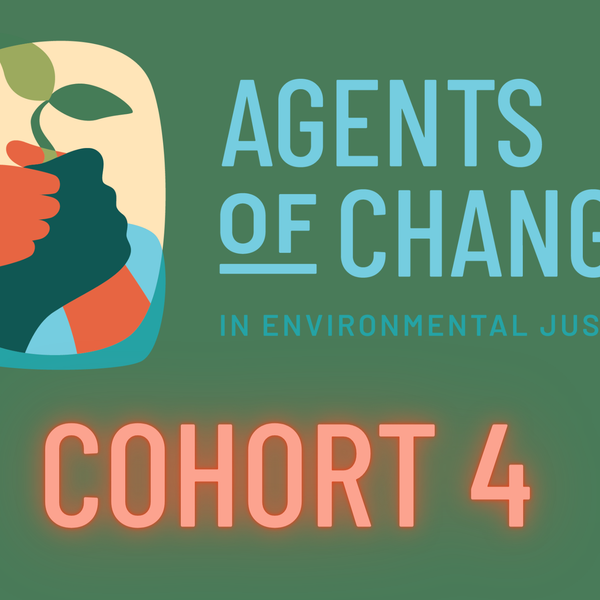Since 2018, I can often be found at our local community center—listening, learning, sharing, and strategizing around the table with community members on ways to push the city for more affordable housing and prevent the displacement of neighborhood residents.
We are members of Dorchester Not for Sale (@DotNot4Sale), a grass-roots alliance of more than 100 residents organizing for a community vision that protects residents most at risk of displacement; prioritizes affordable housing, good jobs, and community safety for current residents; and preserves ethnic-specific services that make our community of Dorchester, Massachusetts, home.
I am passionate about housing security because it determines where we can afford to live and the quality of housing we can live in— all of which affects our health, the health of our communities, and of future generations.
This essay is part of "Agents of Change" — see the full series
As an environmental health PhD student studying housing and health, and as a renter in Dorchester, I joined DotNot4Sale. I wanted to better understand if and how my research mattered on the ground, and in my own neighborhood. I wanted my home to not just be an address but a community, and through DotNot4Sale, I found it.
After attending several community dinners hosted by DotNot4Sale, I learned that the diverse fabric of our community was threatened by massive incoming developments.
The city plans to rezone an 86-acre area for residential and commercial development, called PLAN: Glover's Corner. Rents for the proposed housing developments, most of which will be luxury condos, will be unaffordable to most Dorchester residents.
Dorchester is also a neighborhood of families and multigenerational households. Yet most proposed developments are studios, compact units, or one-bedrooms—too small to accommodate existing residents.
Seeing these proposals flood our neighborhoods, we ask: Who is the city building for?
This essay is also available in Spanish
The housing crisis and threats of displacement affect not only Dorchester but neighborhoods across Boston and in many parts of the U.S.—as previously discussed in a prior Agents of Change blog.
According to the recent national housing report by Harvard's Joint Center for Housing Studies- More than 550,000 Americans were homeless in 2018.
- More than 805,000 renters were threatened with evictions in 2017.
- From 2010 to 2017, about one-third of the country, or 37.8 million households, paid more than 30 percent of their income on housing costs like rent and utilities.

Dorchester Not for Sale in the annual neighborhood parade, June 2019 (Credit: Cristina Eduardo, Dorchester Post)
And guess what? These hardships continue to disproportionately affect minority, Black, Brown, and immigrant households at a higher rate than White households.
Throughout the country, access to affordable housing is under threat. There is a severe shortage of affordable housing supply that is driven by compounding factors, such as increases in real estate speculation, construction and land costs; stagnant federal funding for affordable housing programs; loss of existing affordable housing stock; and slower production of new housing since the 2008 recession—all of this coupled with sluggish wage growth in the past few decades.
Related: Black and brown families displaced and erased
Also, let's not forget about the U.S. history of redlining, predatory lending practices, and refusal of federal housing loans to millions of Black, Asian, Hispanic, Jewish, and immigrant families. These racist policies, many of which were instituted by the federal government, robbed Black and Brown families of the opportunity to own a home, decide where they want to live, and create intergenerational wealth.
Following redlining were government urban renewal programs that targeted communities of color, designating them as "slums" and "blighted" to justify new housing and construction projects. In turn, these programs led to the mass displacement of thousands of Black and Brown families.
Simply put: Black and Brown families were forced to live in undesirable areas. Years later and still today, especially as land becomes scarce, families are now being forced out of their homes for capitalist interests. This is what DotNot4Sale organizes against.

Credit: Dorchester Not for Sale, @DotNot4Sale

Credit: Dorchester Not for Sale, @DotNot4Sale
Inequality and evictions
The impacts of institutional racism prevail today in Boston, where the median net worth of Black households is $8 compared to $247,500 for White households.
Dorchester, one of Boston's neighborhoods that experienced redlining, is home to a diverse and working class community with the highest number of immigrants and non-English speaking households in the city. About two-thirds of residents are renters, and the average income for workers is $41,000 a year. The increase in large-scale and luxury housing developments throughout the city and the speculation of development have driven up housing prices and living costs. As of right now, the average rent in Dorchester is $2,894 per month—or $34,728 a year.
Residents are feeling the harm.
One DotNot4Sale member shared with me (translated from Vietnamese): I like this neighborhood; I like living here. Low-income people here live very peacefully—don't disturb anyone and keep the city safe. If there is new development, there will be no benefits for people like me—there will be more traffic, rents will increase, and more displacement. These developments will only benefit landlords, developers, and those that have a lot of money.
Many residents have already left. Since 2011, the number of eviction cases filed to the Boston Housing Court was approximately 5,200 per year, or 14 cases per day. While alarming, we know this number is likely underestimated. Many families that are displaced don't make it to housing court out of fear of retaliation from their landlord and/or lack of legal support.
“I get sick a lot”
In areas of high housing demand, several community residents have shared that landlords have ignored making housing repairs in order to drive tenants out more quickly and resell or re-lease the property for a higher profit.
As one DotNot4Sale member shared with me (translated from Vietnamese): I call my landlord to fix the hole above my sink, but he ignores me. Water is leaking from the upstairs kitchen into mine. There is no heat in the main living areas of my apartment. I get sick a lot.
Imagine you are a single parent of two children, making $40,000 a year and paying $1,600 a month, or almost 50% of your income a year, for a one-bedroom. With the surge of luxury condos in your neighborhood, there are few places that you could afford in decent enough condition for your children.
You worry about making ends meet in the short-term, like paying for groceries, daycare, utilities, and bus passes.
Your apartment is owned by a slum lord who has not repaired the holes in the walls, the broken windows, nor addressed the mold and pest issues that were there when you moved in. Money-strapped and not able to take time off work, you cannot make these repairs on your own.
You are afraid to ask your landlord to fix these issues for fear they may increase the rent or kick you out and find other tenants.
These unaffordable and unsafe living conditions are causing you stress and taking a toll on yours and your children's mental and physical health- their ability to focus in school, your ability to sleep.
You and your children live in constant fear of having to move again.
Now take a deep breath.
While this may be an exercise for you, millions of Americans are in this situation right now.
What has been done?

"Community in Action: A Mural for Vietnamese Folks in Fields Corner", Fields Corner, Dorchester, MA. (Credit: Ngoc-Tran Vu )
Currently, there are three main forms of governmental housing assistance in the U.S.: public housing, income-restricted units, and Section 8 housing vouchers. All are for low-income tenants and require a home inspection, but they vary in the type of housing, who manages them, and levels of income eligibility. Public housing is government-owned, while income-restricted units are privately-owned and rent is subsidized by the government. The Section 8 voucher program leaves it up to tenants to find their own housing that accepts vouchers.
These programs are not enough. Some even fail to adequately protect residents. In 2017, only 37 percent of the 11 million extremely low-income renters received housing assistance. The average national wait time to get a Section 8 voucher is two years. Many landlords also discriminate against renters with vouchers.
Even with vouchers, renters are facing evictions. For example, in Boston, we still see many eviction cases involving tenants on housing assistance.
As a country, we need a progressive affordable housing agenda and comprehensive policies and programs in both public and private sectors to make a dent in the housing crisis.
In recent years, nonprofit, philanthropic and religious organizations, and hospitals have stepped up. Some case examples include:
- Community land trusts (CLT) like the Dudley Street Neighborhood Initiative that have been a tool for permanent affordability, equity generation through homeownership, and community-centered decision-making. As of 2018, there are more than 225 CLTs across the country.
- A $3 million Innovative Stable Housing Initiative from three Boston-area hospitals to fund policy and systems-level housing security approaches, community-centered advocacy, and cross-neighborhood organizing.
- Donation of church lands in New York City to build 2,000 affordable units in the next 10 years.
Going beyond physical hazards
It is time for the environmental health community to also step up and be at the forefront of addressing housing insecurity.
Traditional environmental health research and funding priorities have focused on making our buildings more energy efficient and/or specific physical or chemical hazards, such as air pollution, lead, pesticides, and mold.
While this research has led to major public health improvements—such as more stringent housing codes, a ban on lead-based paint, integrated pest management, and lowering energy costs—it can fall short of addressing the root causes of why low-income and communities of color continue to face homelessness, higher housing-cost burden, and poor housing conditions.

"Homes For All" Assembly, Dorchester, MA, June 2019. (Credit: Lisa Thompson)
If we focus on just the physical and chemical hazards of the indoor environment, how can we adequately address and prevent the root causes of health problems associated with housing insecurity?
I believe that housing is a human right. My experience in the community has pushed me to expand my definition of environmental health and contextualize my research in the existing affordable housing crisis. It has shown me that housing insecurity is a core environmental public health issue.
Housing insecurity increases a household's risk of living in unsafe and unhealthy conditions, their risk of being displaced, which in turn perpetuates the cycle of housing insecurity. Households experiencing evictions report worse self-reported health, higher stress levels, depression, and material hardship. They also have a greater risk of suicide. For children, evictions and having to move frequently can lead to poor mental and physical health, disrupted schooling, and a lower earning potential in future jobs.
Knowing this, I cannot turn a blind eye to the urgency of the affordable housing crisis in my own community and across the country. I cannot turn a blind eye to my neighbors who are being evicted and/or moving away because they cannot afford rent.
The role of researchers and practitioners
As environmental health researchers and practitioners, we have the responsibility to continually ask: Are we addressing the root causes of poor health?
We need to incorporate housing security in our environmental health research, funding, curriculum, and community outreach initiatives. If we don't, we will miss key opportunities to address the health of millions of households currently burdened by unaffordable housing and homelessness. We will miss important pathways for equitable and long-term public health interventions.
So, what can we do? Some initial steps we could take:
- Lead public health research that fills the evidence gap about the impacts of affordable housing policies and programs on environmental exposure, health, and economic well-being at the household and community level. For example, important but unanswered questions include: how do gentrification and housing insecurity impact indoor environmental quality? How many pediatric hospitalizations or deaths can be prevented by investing in long-term housing solutions such as community land trusts or rent control? These data can be very useful for housing policy and programmatic decisions.
- Dedicate funding towards housing insecurity research and community engagement. Currently, priorities of the National Institute of Environmental Health Sciences, and in particular their 2018-2023 strategic plan, omit the role of housing and housing insecurity on health.
- Revamp our environmental health curriculum to better address environmental justice and the role of housing security on health. Our curriculum can benefit from more collaborations with other disciplines like urban planning, sociology, and public policy that also look at housing but may focus less on health. We need to also further engage with community partners to better understand housing challenges that they face and ways they are working to address them.
- Collaborate with community, clinical, business, and government partners to identify solutions for permanent housing affordability and for tenant support to keep and maintain their homes. Support the capacity of local nonprofit organizations and community development corporations through funding and/or technical assistance. Solidify these relationships at the institutional level so that they can sustain beyond funding cycles and/or staffing turnovers.
It's an uphill battle that won't be fixed overnight. But already in my almost two years with DotNot4Sale, I've seen the power of community residents challenging the status quo about what's possible for our neighborhoods.
I fight with DotNot4Sale as a resident who cares about her community and its people.
I fight as an environmental health researcher and a public health advocate who believes that safe and secure housing access is a key determinant of health.
Today, I urge you to support the many housing assistance measures at the federal and state levels to ensure that tenants, homeowners, and homeless individuals can access safe housing and afford to stay in their homes during this pandemic, including:
- Emergency rental, mortgage, and eviction prevention assistance
- A national moratorium on evictions and foreclosures
- Emergency funding for homelessness service providers, housing authorities, and housing providers
- Expanding unemployment insurance, food, and fuel assistance
- Expanding paid sick leave, paid emergency leave, and health care access
National and state updates about housing assistance resources and policies can be found at Citizens' Housing & Planning Association, National Low Income Housing Coalition, and the Health Housing Guarantee initiative.
COVID-19 note: COVID-19 has brought significant challenges to communities and households across the country and in our own neighborhoods, including the loss of loved ones, jobs, and access to stable income, social services, and health care. All of this significantly hurt our homeless populations, as well as tenants and homeowners and their ability to pay rent, mortgages, and other housing costs. This pandemic has exposed the limitations of our existing housing safety nets. Now more than ever, we need immediate and long-term affordable housing solutions to keep residents safe and secure in their homes.
Banner photo: Rent control rally, Massachusetts State House, January 2020. (Credit: Lori Hurlebaus)
- Beyond coffee and condos: Black and brown families displaced and ... ›
- Op-ed: A radical solution to make US affordable housing healthy and community-driven - EHN ›
- Una propuesta radical para viviendas asequibles, salubres y al servicio de la comunidad en Estados Unidos - EHN ›
- Tapping into the power of community to make informal settlements healthier - EHN ›
- Aprovechar el poder comunitario para hacer más sanos los asentamientos informales - EHN ›
- Making informal settlements healthier - EHN ›
- Sabah Usmani on making cities healthy and just - EHN ›

